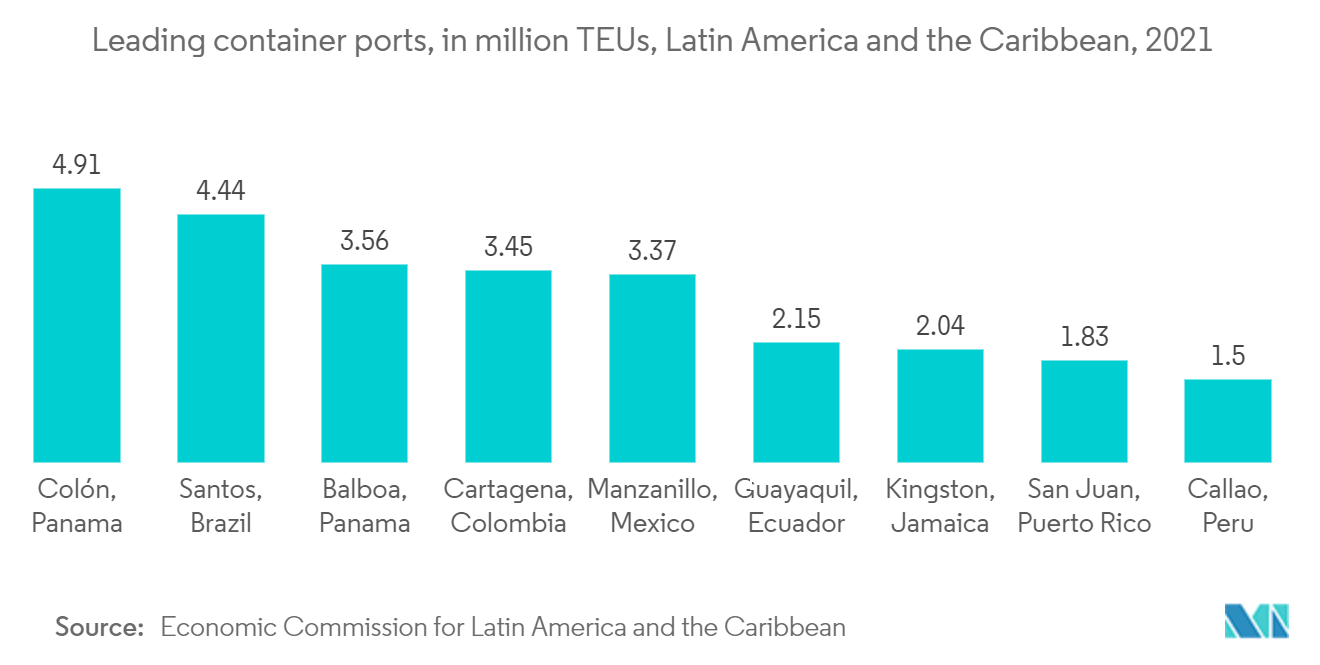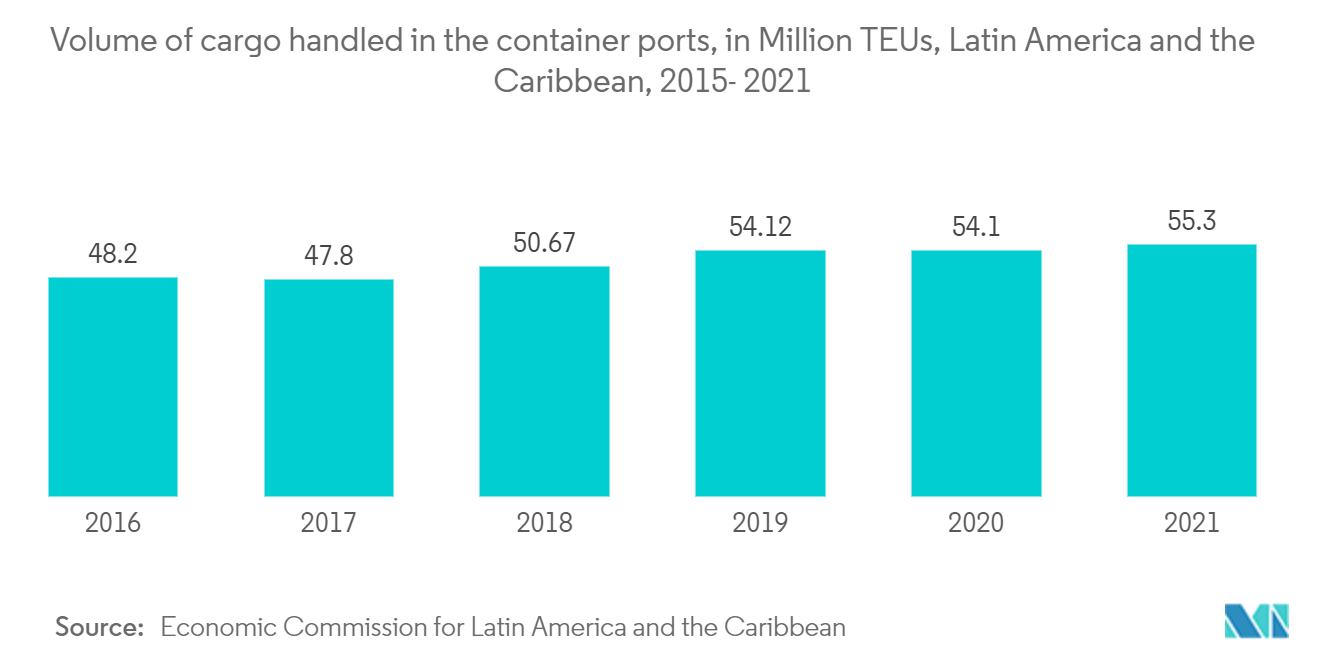Market Trends of Latin America Container Terminal Operations Industry
This section covers the major market trends shaping the Latin America Container Terminal Operations Market according to our research experts:
Rise in Container Seaborne Trade
In 2021, Panama's Port of Colon handled the largest cargo container in Latin America and the Caribbean, handling approximately 4.91 million TEUs. Brazil's port of Santos followed closely behind with 4.44 million TEUs of cargo. Balboa, on the Pacific side of the Panama Canal, was also among the top five Latin American ports of the year. Nevertheless, the region's trade volume has grown significantly over the past decade, and countries in the region rely heavily on container shipping to develop and sustain their economies. The Panama Canal, which connects the Pacific and Atlantic oceans is located in Latin America. Moreover, with the advent of digitalization and ongoing globalization, Latin American countries are striving more than ever to become part of the global economy. The ports of this continent boost the industrial development and economy of each country, thereby enhancing the consumption power of the entire continent. Logistics companies that regularly ship cargo to and from Latin America, or work with agents on this continent,use one of the continent's 453 ports.
Port of Colon, Panama- Located on the Atlantic side of Panama, the Port of Manzanillo covers an area of 58 hectares. However, the port authority plans to expand the port area by another 100 hectares. The port handles over 140,000 of Ro-Ro vehicles daily. In addition, between 1.9 million and 2.1 million TEUs of cargo are processed annually. Port of Santos, Brazil- Located just 70 miles from Sao Paulo, Brazil's most populous city, the Port of Santos is one of the country's premier ports. With enormous logistics capacity, the port is also known as one of the most modern ports on the continent. The city of Santos is one of the most important trade routes in Brazil. Most importantly, about 27% of Brazil's trade balance passes through this port. Port of Santos is connected to over 600 ports in 125 countries. Major cargoes transported to and from Santos Port include wheat, sugar, oil, soybeans, alcohol, machinery, paper, automobiles, cotton oranges and fertilizers.

Increasing Maritime Trade
In Latin America and the Caribbean, flags accounted for 21.5% of the global fleet in 2021. Considering the total merchant fleet by registered flag expressed in thousands of dead weight tons (DWT), Panama ranked first on the list, accounting for 16.1% of the merchant fleet in 2021, according to UNCTADSTAT (2022). In recent years, Latin America and the Caribbean account for about 17% of all seaborne freight worldwide. However, the regional share of the shipping industry is smaller. Most of Latin America's largest countries have their own shipping companies (privately or publicly funded) until 20-30 years ago, but in reality, the influence of the companies remaining in the market is much smaller.
The shipping industry in Latin America and the Caribbean has the unique characteristics of companies in this industry that are largely privately owned, have a small fleet, and are not too remote in geographical reach and diverse expertise. The Panama Canal (PC) is the shortest functioning route linking maritime trade between the Atlantic and Pacific oceans. It is also the shortest route for gas cargo from the Gulf of Mexico to North Asia. The Panama Canal (PC) is vital to global trade, with more than USD 270 billion in cargo passing through the canal each year. It serves over 140 sea routes in over 80 countries. The expansion was completed on 26 June 2016, allowing passage for Neo-Panamax and some Post-Panamax vessels. This increased port competition, trade, cargo tonnage and shipping activity within the Latin America region.

